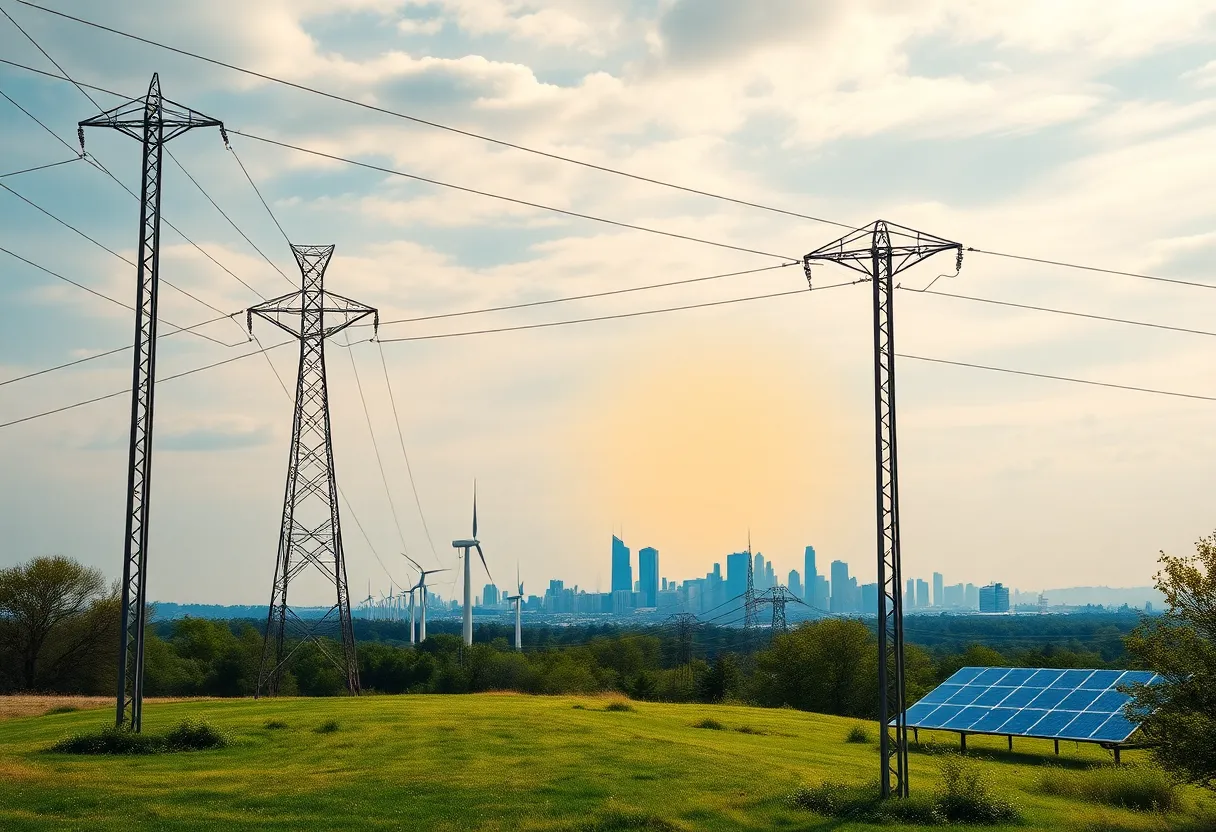Harrisburg, Pennsylvania, August 21, 2025
News Summary
Discussions among policymakers in Harrisburg may lead to significant changes in Pennsylvania’s competitive power market by allowing utility monopolies to generate electricity again. This legislation could threaten consumer choice and market efficiency, despite current capabilities meeting future electricity demands. Critics argue that reverting to monopolistic structures risks increasing costs and reducing innovation, which have characterized the competitive market since its restructuring in 1996. Meanwhile, Pennsylvania remains a leader in electricity exports and has seen a consistent decline in carbon emissions.
Pennsylvania’s Competitive Power Market at Risk of Changes
Policymakers and special interest groups in Harrisburg are currently engaged in discussions that could significantly alter Pennsylvania’s competitive power market. Proposed changes aim to allow utility monopolies to once again generate electricity, a move that threatens consumer choices and could undermine the effectiveness of the existing energy market.
The current market structure is positioned as a means to ensure that Pennsylvania can meet its escalating electricity demand, which has been fueled by advancements in artificial intelligence, growth in data centers, and an increased push to electrify both transportation and manufacturing. Critics of the proposed legislation argue that these regulatory adjustments are unnecessary and misguided, particularly given the state’s current capabilities to manage its energy needs.
Understanding Pennsylvania’s Energy Landscape
Pennsylvania participates in the PJM Interconnection, which is the largest grid operator in the United States, serving 13 states and Washington D.C. PJM conducts regular auctions, allowing electricity generators to sell power to utility companies and ensuring that there is enough capacity to meet demand.
To further bolster the reliability of the grid, PJM has initiated a Reliability Resource Initiative that is designed to fast-track the addition of new energy resources. As a result of this initiative, 51 shovel-ready electricity projects have been selected for expedited approval. An impressive 90% of these projects are expected to become operational by 2030 and will increase the grid capacity by 11,793 megawatts. The new developments include advanced nuclear plants, natural gas-fired power plants, and robust battery storage options.
Notably, Pennsylvania currently stands well-equipped to meet its energy needs through 2032, even before incorporating these new supplies. Currently, the state is a leading exporter of electricity in the U.S. and has seen a continuous decrease in carbon emissions from electricity generation.
The Shift Towards Monopolies
In 1996, Pennsylvania underwent a significant restructuring of its energy market to promote competition and eliminate utility monopolies. This shift allows consumers the freedom to choose their electricity suppliers and switch providers if they are dissatisfied with their service. There are clear benefits associated with restructured states, including slower retail price growth, reduced greenhouse gas emissions, and fewer service outages compared to states operating under monopolies.
The proposed legislation, known as H.B. 1272, seeks to reverse more than three decades of regulations by permitting utilities to build and own their power plants. This would allow them to charge customers for construction costs, potentially distorting price signals and decreasing overall market efficiency. Additionally, this change may elevate risks for consumers, as utilities would operate with reduced incentives for innovation and improved customer service in a risk-free environment.
One of the major concerns raised is that consumers may be forced to subsidize electricity generation projects that primarily benefit other states. While existing laws allow utilities to develop subsidiaries for new power generation, this option comes with its own set of risks and has been deemed ineffective in the past.
Supporters of maintaining the competitive market argue that it generates significant investments, preserves reliability, and helps keep electricity prices stable.
Conclusion
The current discussions in Harrisburg over the fate of Pennsylvania’s energy market raise significant concerns about the future of consumer choice and market efficiency. As the state grapples with increasing electricity demands, the push toward reverting to monopoly structures could undermine the progress made since the energy market’s restructuring in 1996.
FAQ Section
What is the current state of Pennsylvania’s power market?
Pennsylvania’s power market is currently structured to promote competition among various energy suppliers, giving consumers the ability to choose their electricity provider and ensuring stable pricing and reliability.
What changes are being proposed by lawmakers?
Legislation, specifically H.B. 1272, is proposed to allow utility monopolies to generate electricity again, reversing the competitive framework established in 1996.
What are the potential impacts of these changes on consumers?
If approved, the changes could lead to higher costs for consumers, reduced choice in electricity suppliers, and less incentive for utilities to innovate and provide high-quality service.
How is Pennsylvania’s energy capacity expected to change in the coming years?
Through PJM’s Reliability Resource Initiative, Pennsylvania is projected to add 11,793 megawatts to the grid by 2030, significantly improving its capacity to meet future electricity demand.
Deeper Dive: News & Info About This Topic
Construction PA Resources
Tax Credit Rollback Threatens Renewable Energy Growth in Pennsylvania
Additional Resources
- Times Online
- Daily Courier
- Missouri Independent
- CNET
- Virginia Mercury
- Wikipedia: Electricity Market
- Google Search: utility monopolies
- Google Scholar: utility monopolies energy
- Encyclopedia Britannica: Electricity Utility
- Google News: utility monopolies





